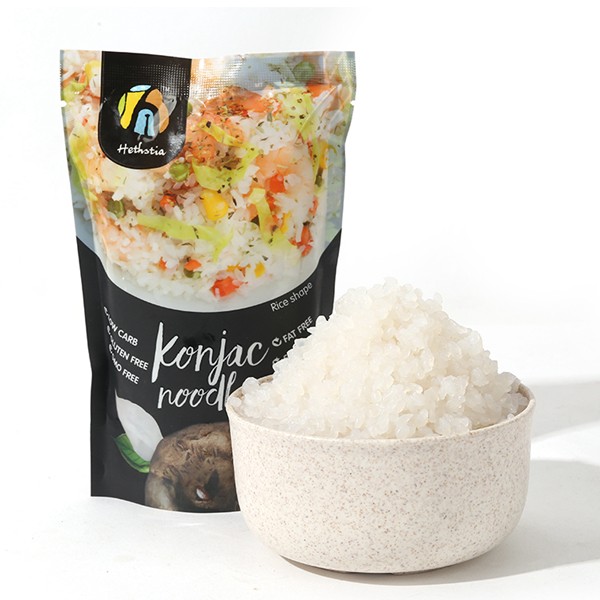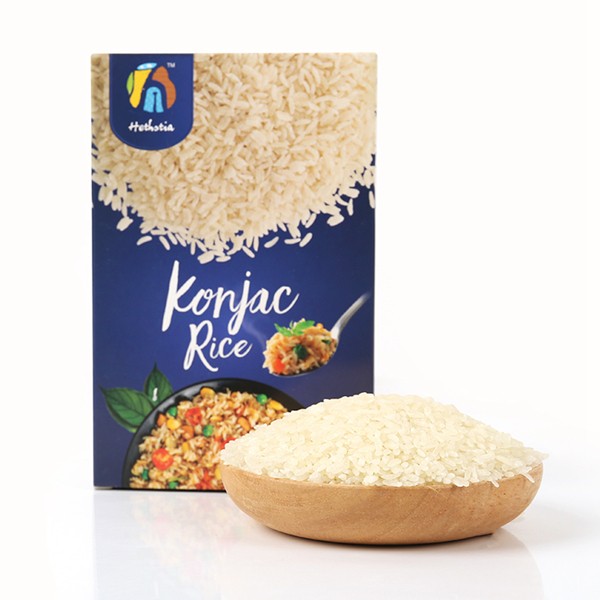I. Understanding the Basics
A. What is a Keto Diet?
The ketogenic diet is a dietary approach that involves reducing carbohydrate intake and increasing fat consumption to induce a metabolic state called ketosis. Ketosis occurs when the body primarily uses fat for fuel instead of carbohydrates.
Understanding the challenges and considerations of different types of ketogenic diets is essential in order to harness the various health benefits that come with this metabolic shift.
There are several variations of the ketogenic diet, including the Standard Ketogenic Diet (SKD), the Targeted Ketogenic Diet (TKD), and the Cyclical Ketogenic Diet (CKD). Each type has its unique characteristics and considerations.
Standard Ketogenic Diet (SKD):
SKD is the most common and well-studied form of the ketogenic diet. It typically involves consuming a high-fat, moderate-protein, and very low-carbohydrate diet.
While the SKD can be effective for weight loss and improving metabolic health. Individuals accustomed to high carbohydrate consumption may encounter challenges when transitioning to this diet.
Adapting to a low-carbohydrate intake may result in initial side effects such as the “keto flu,” which can include fatigue, dizziness, and irritability.
However, individuals can usually alleviate these symptoms temporarily by staying well-hydrated, replenishing electrolytes, and gradually reducing their carbohydrate intake.

Cyclical Ketogenic Diet (CKD):
The CKD involves alternating periods of strict carbohydrate restriction (similar to the SKD) with periods of higher carbohydrate consumption.
This approach is commonly followed by athletes or individuals seeking to build muscle mass while still benefiting from the metabolic flexibility of ketosis.
However, implementing CKD requires careful planning and adherence to specific guidelines to ensure the desired balance between carbohydrate refeeding and ketogenic states.
It’s crucial to monitor individual responses and adjust the duration and frequency of carbohydrate refeeding to avoid unwanted weight gain or metabolic disruptions.

B. How Does It Work?
The ketogenic diet’s central principle is to reduce carbohydrate intake, forcing the body to turn to fat as its primary energy source. When carbs are limited, the liver begins to convert fat into fatty acids and ketone bodies.
These ketones replace glucose as a primary source of energy. This shift is what leads to the state of ketosis, where the body becomes highly efficient at burning fat for energy and can provide sustained fuel for both the brain and muscles.
Understanding the fundamental principles of the keto diet is the first step toward a successful ketogenic journey.
By choosing the type that aligns best with one’s lifestyle and goals, individuals can embark on a personalized path toward potential health benefits.

II. Potential Health Benefits
Researchers have associated the ketogenic diet with various potential health benefits. While researchers must conduct further research to understand its effects fully, several studies have already shown promising results. Here are some potential health benefits of the ketogenic diet:
Weight Loss:
The keto diet promotes weight loss by increasing fat consumption and inducing ketosis, increasing fat burning.
Increased Mental Clarity and Energy:
Many individuals report improved mental clarity and increased energy levels when following a ketogenic diet. Studies have shown that ketones provide a more efficient and sustained energy supply to the brain.
Improved Blood Sugar Control:
The ketogenic diet may help improve blood sugar control, especially in individuals with type 2 diabetes. By reducing carbohydrate intake, the diet can lower blood glucose levels and improve insulin sensitivity.
Other Potential Therapeutic Effects:
The ketogenic diet reduces seizures in epileptic patients who don’t respond to medication.
The ketogenic diet has shown promise in several therapeutic areas, although more research is needed.
For example:
- Epilepsy: The ketogenic diet reduces seizures in epileptic patients who don’t respond to medication.
- Neurological Disorders: The ketogenic diet may benefit neurodegenerative disorders like Alzheimer’s, Parkinson’s, and MS. Some studies suggest that ketones may provide neuroprotective effects and improve cognitive function.
- Cancer: The ketogenic diet may limit cancer cell growth by reducing glucose supply. However, determining the efficacy and appropriate applications of the ketogenic diet in cancer treatment requires further research.
III. Possible Side Effects and Risks
While the ketogenic diet has potential health benefits, it also carries certain side effects and risks. It’s important to be aware of these potential drawbacks before considering the diet. Here are some possible side effects and risks associated with the ketogenic diet, along with suggestions to mitigate them:
1. Keto Flu: Some individuals may experience what is commonly known as “keto flu” when transitioning to a ketogenic diet. Symptoms can include fatigue, headache, nausea, dizziness, and irritability. These symptoms occur as the body adapts to using ketones for energy instead of glucose.
Mitigation: To mitigate the symptoms of keto flu, it is important to stay well-hydrated, replenish electrolytes (such as sodium, potassium, and magnesium), and ensure sufficient caloric intake. Gradually reducing carbohydrate intake over several weeks may also help the body adapt more smoothly.
2. Nutritional Deficiencies: The Ketogenic diet limits food groups, causing potential deficiencies. Low in fruits, veggies, and whole grains, lacks fiber, vitamins, minerals, and phytochemicals. These nutrients play crucial roles in overall health and may increase the risk of deficiencies if not adequately addressed.
Mitigation: On a keto diet, eat low-carb, nutrient-dense foods like non-starchy veggies. Work with a dietitian and consider supplements to avoid deficiencies.
3. Increased Risk of Kidney Stones: The Ketogenic diet may increase kidney stone risk due to lower urine pH and increased excretion of calcium, oxalate, and uric acid, especially in susceptible individuals.
Mitigation: To prevent kidney stones, stay hydrated, consume fluids, and eat citrate-rich foods like lemon or lime juice. Those with past kidney stones should get regular check-ups.
4. Potential Adverse Effects on Gut Health: The keto diet affects gut health by changing microbiota and reducing fiber intake, which harms gut diversity.
Mitigation: Include fiber-rich foods like veggies, nuts, and avocados for gut health on a keto diet.
Additionally, incorporating fermented foods like sauerkraut, kimchi, and kefir can help support a healthy gut microbiome. Under the guidance of a healthcare professional, individuals may consider probiotic supplementation.
5. Potential Long-Term Risks: Ketogenic diet benefits are unclear and may cause nutrient deficiencies, heart issues, and bone problems.
Mitigation: Follow a well-formulated ketogenic diet with nutrient-dense foods and healthy fats. Monitor health markers regularly and consult with a healthcare professional or registered dietitian.
IV. Preparing for the Diet
Before starting a ketogenic diet, it’s important to adequately prepare and gather the necessary information. Here are some suggestions for improvement regarding how to approach the consultation with a healthcare professional, meal planning, and portion control:
Section A: Consultation with a Healthcare Professional
When considering a ketogenic diet, it is highly recommended to consult with a healthcare professional or a registered dietitian. Here’s how you can approach the consultation:
- Research and Compile Information: Before the consultation, gather information about the ketogenic diet, its principles, potential benefits, and possible risks. Make a list of your questions and concerns to discuss with the healthcare professional.
- Share Medical History: Provide a comprehensive medical history, including any existing health conditions, medications, and allergies. This info helps assess your suitability for keto & tailor recommendations.
- Discuss Goals and Expectations: Communicate your goals and expectations for following a ketogenic diet. Share your goals for personalized guidance.
- Seek Individualized Advice: Request personalized advice based on your specific circumstances. The healthcare professional can offer recommendations on nutrient intake, potential supplementation, monitoring key health markers, and addressing any concerns related to the ketogenic diet.
Section B: Meal Planning and Recipe Books
Meal planning is an essential aspect of successfully adopting a ketogenic diet. Consider the following suggestions:
- Seek Professional Guidance: Work with a registered dietitian experienced in ketogenic diets to develop a customized meal plan. They can consider your preferences, dietary restrictions, and nutrient needs to create a well-balanced and sustainable eating plan.
- Utilize Online Resources: Numerous websites, blogs, and social media platforms provide ketogenic recipes and meal ideas. Look for reputable sources that offer a variety of recipes using different ingredients and cooking methods. Examples of popular ketogenic recipe websites include ruled.me, ibreatheimhungry.com, and ketodietapp.com.
- Explore Recipe Books: Consider purchasing or borrowing recipe books specifically focused on ketogenic diets. Some popular options include “The Ketogenic Bible” by Jacob Wilson and Ryan Lowery, “The Keto Diet” by Leanne Vogel, and “Keto Comfort Foods” by Maria Emmerich. These books often provide meal plans, shopping lists, and detailed recipes to simplify the meal-planning process.
Section C: Portion Control and Serving Sizes
Portion control is important to ensure you are consuming appropriate amounts of food on a ketogenic diet. Here are a few tips:
- Measure and Weigh Ingredients: Use measuring tools (cups, spoons, scale) for accurate portioning to track macros and reach carb, fat, and protein goals.
- Use Online Tools and Apps: Use online tools and apps for nutritional info to track macronutrients and stay in desired ranges.
- Reference Serving Size Guidelines: Familiarize yourself with serving size guidelines for different food groups. For example, Meat: 3-4 oz. Veggies: cups or grams.
V. Monitoring and Adjusting the Diet
Success on the keto diet often requires ongoing monitoring and potential adjustments:
Importance of Regular Monitoring:
Tracking biomarkers can show if the body is in ketosis and how the diet affects health.
Ways to Track Progress:
Tools can help track progress, from ketone strips to food logging apps.
When and How to Make Changes:
Recognizing when the diet needs adjustment, whether to break through a plateau or address a nutrient deficiency, is essential. Ongoing consultation with healthcare providers and tuning into one’s body can guide these adjustments.
VI. Common Myths and Misconceptions
There are several myths and misconceptions surrounding the ketogenic diet. It’s essential to address these misconceptions and provide accurate information. Here are some suggestions for improvement, including additional examples, evidence, and real-life stories:
Myth 1: The Ketogenic Diet Is Unhealthy Due to High Fat Consumption.
Additional Information: A keto diet = high healthy fats (avocado, nuts, fish) ≠ automatically unhealthy. Not all fats are equal. Nutrients & satiety are promoted.
Evidence: Research studies have shown that when implemented correctly, the ketogenic diet can lead to improvements in various health markers, including weight loss, blood sugar control, and cardiovascular risk factors.
Real-Life Story/ Testimonial: Share a real-life story of someone who successfully followed a ketogenic diet and experienced positive health outcomes, such as weight loss, improved energy levels, or better blood sugar control. This personal account can help strengthen the credibility of the information.
Myth 2: The Ketogenic Diet Is Only for Weight Loss.
Additional Information: While weight loss is a common reason for adopting a ketogenic diet, it offers benefits beyond weight management. Diet studied for epilepsy, diabetes, PCOS & neurodegeneration.
Evidence: Provide references to scientific studies that explore the therapeutic applications of the ketogenic diet beyond weight loss. For example, the ketogenic diet reduces seizures and improves insulin sensitivity.
Real-Life Story/ Testimonial: Share a personal story of someone adopting a ketogenic diet for managing epilepsy or improving insulin resistance, showing the diet’s diverse benefits.
Myth 3: The Ketogenic Diet Is Difficult to Sustain Long-Term.
Additional Information: With guidance and support, individuals can sustain a ketogenic diet long-term. Many individuals have successfully incorporated the ketogenic diet into their lifestyle and maintained it for extended periods.
Evidence: Reference studies or surveys that have investigated the long-term sustainability of the ketogenic diet. These studies often show that with appropriate education, ongoing support, and personalized meal plans, individuals can adhere to the diet and achieve their health goals.
Real-Life Story/ Testimonial: Share a real-life story of someone who has followed a ketogenic diet for an extended period and found it sustainable and enjoyable. Highlight their strategies for long-term success and any challenges they overcame. This can provide inspiration and motivation for others considering the ketogenic diet.
VII. Embracing Konjac for Carb Control
If you’re seeking a seamless way to cut carbs without sacrificing the satisfaction of dishes like pasta and rice, look no further than Konjac-based foods. Derived from the konjac plant, these substitutes, often called “shirataki noodles” or “konjac rice” offer an almost zero-carb alternative to traditional staples.
Their ability to absorb flavors makes them versatile in dishes, and the added fiber promotes satiety, aiding in appetite control.
Swapping out regular carbs for Konjac products is a game-changer for anyone on a keto journey. Dive in and discover the wonders of Konjac for a guilt-free, low-carb experience!
Konjac-based products can be a valuable addition to a ketogenic diet due to their low carbohydrate content.
Here are some suggestions for improvement, including more specific information about konjac-based products and examples of their use in a ketogenic diet:
Nutritional Profile and Cooking Instructions:
Nutritional Profile: Konjac is a plant that contains a fiber called glucomannan. Konjac-based products, such as konjac noodles, rice, or pasta, are extremely low in carbohydrates and calories. They are primarily composed of water and glucomannan fiber, which provides a feeling of fullness without significantly impacting blood sugar levels.
Cooking Instructions: Konjac-based products often come pre-packaged and ready to use. However, it’s important to rinse them thoroughly under cold water to remove any potential odor. You can then add them to various recipes, such as stir-fries, soups, or salads. It is important to note that individuals may need some time to get used to the unique texture of konjac-based products.
Examples and Recipes:
Konjac Noodle Stir-Fry: Create a delicious and low-carb stir-fry by replacing traditional noodles with konjac noodles. Toss proteins like chicken or shrimp with low-carb vegetables like broccoli, bell peppers, and mushrooms. Add the rinsed konjac noodles to the pan, along with your favorite stir-fry sauce or seasoning. Toss everything together until well combined and heated through.
Konjac Rice Cauliflower “Risotto”: Prepare a keto-friendly “risotto” by combining konjac rice with cauliflower rice. Saute garlic and diced onion in olive oil until fragrant.
Add the konjac rice and cauliflower rice to the pan and cook until tender. Season with herbs and spices of your choice, such as thyme or rosemary. Optionally, add grated Parmesan cheese for extra flavor and creaminess.
Konjac Pasta with Creamy Alfredo Sauce: Enjoy a satisfying pasta dish without the excess carbs. Boil the konjac pasta according to the package instructions. In a separate pan, melt butter and add minced garlic.
Pour in heavy cream and simmer until slightly thickened. Stir in grated Parmesan cheese until melted and season with salt, pepper, and nutmeg.
Toss the cooked konjac pasta in the creamy Alfredo sauce and serve with steamed vegetables or grilled chicken.
Starting on a ketogenic diet is a significant lifestyle choice that can offer potential benefits but also comes with its unique challenges and considerations.
From understanding the fundamental principles and potential health effects to preparing and adjusting the diet, success requires informed decision-making and possibly professional guidance.
While the myths and misconceptions surrounding the keto diet abound, sound knowledge and careful planning can pave the way for a rewarding and healthy ketogenic journey.

















2 thoughts on “What are the benefits of ketogenic diet?”
Real good information can be found on web site.
Hello! I just wanted to say how much I appreciated this blog post. Your writing is always so engaging and informative. It’s clear that you have a deep understanding of the subject matter. Thank you for sharing your expertise with us. Looking forward to your next post!